'Iceberg Corridor' sparks tourist boom on Canada's east coast
The calving of Greenland's glaciers has breathed new life into the remote coastal villages of Newfoundland and Labrador.

Canada: At dusk, tourists marvel at the sensational collapse of an iceberg at the end of its long journey from Greenland to Canada's east coast, which now has a front row seat to the melting of the Arctic's ice.
While the rest of the world nervously eyes the impact of global warming, the calving of Greenland's glaciers -- the breaking off of ice chunks from its edge -- has breathed new life into the remote coastal villages of Newfoundland and Labrador.
Once a hub of cod fishing, the province now plays host to hordes of amateur photographers and tourists hoping to capture the epic ice melt for posterity. As winter ends, iceberg spotting begins.
"It keeps getting better every year," says Barry Strickland, a 58-year-old former fisherman who now takes tourists in his small boat around King's Point in the north of the province.
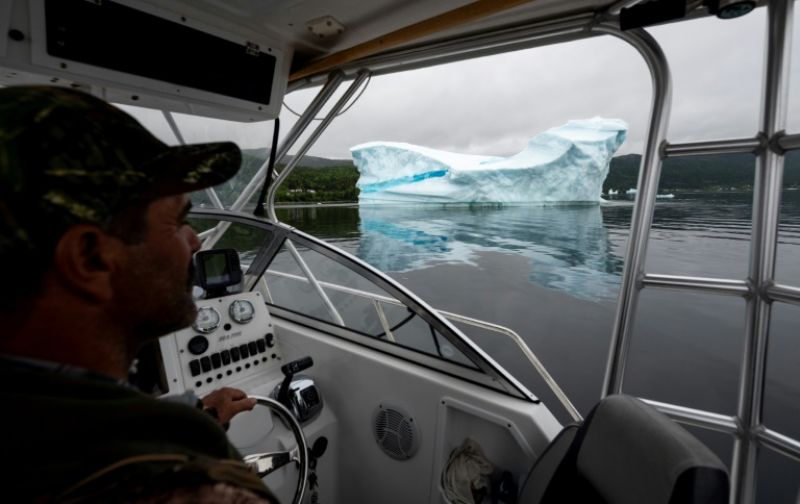 Tour guide and former fisherman Barry Strickland steers his boat near an iceberg at King's Point -- iceberg tourism has been a success for the area on Canada's eastern shores. (Photo: AFP)
Tour guide and former fisherman Barry Strickland steers his boat near an iceberg at King's Point -- iceberg tourism has been a success for the area on Canada's eastern shores. (Photo: AFP)
"We've got 135, 140 tour buses with older people coming into the town every season so it's great for the economy."
For the past four years, Strickland has taken visitors to bear witness to the death throes of these ice giants, which can measure dozens of meters in height and weigh hundreds of thousands of tons.
Winds and ocean currents bring the icebergs from northwest Greenland, thousands of kilometers (miles) away, to Canada's shores.
In a matter of weeks, ice frozen for thousands of years can quickly melt into the ocean.
- 'Incredible' rise in tourism -
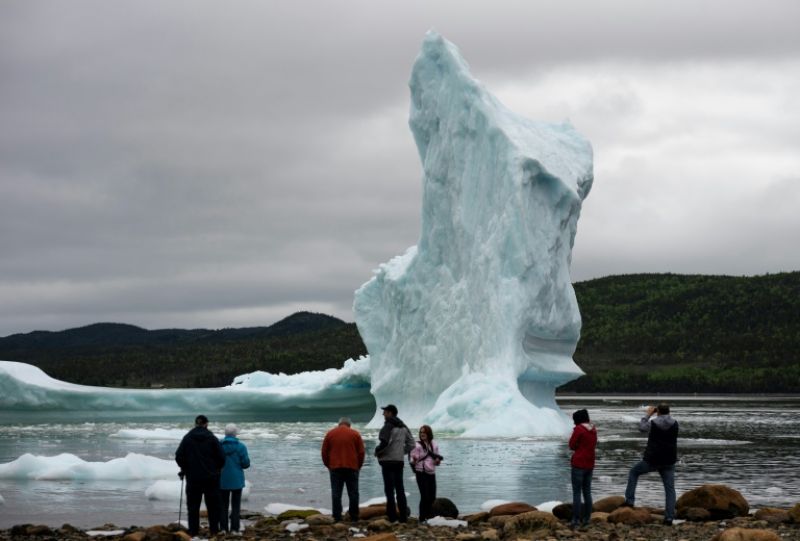 Tourists look at icebergs from the seashore of King's Point -- May to July is peak viewing season, bringing thousands of visitors from around the world to this tiny village of just 600 residents. (Photo: AFP)
Tourists look at icebergs from the seashore of King's Point -- May to July is peak viewing season, bringing thousands of visitors from around the world to this tiny village of just 600 residents. (Photo: AFP)
Strickland's boat excursions are often fully booked during the high season from May to July, with tourists coming from all around the world to King's Point, a village of just 600 inhabitants.
The villagers keep track of the icebergs on an interactive satellite tracking map put online by the provincial government.
"There's not much in these small outport towns anymore to keep people around, so tourism is a big part of our economy," said Devon Chaulk, who works in a souvenir shop in Elliston, a small town of 300 on "Iceberg Corridor," as the coastline is now known.
"I've lived here my entire life, and the increase in tourism around here in the past 10 to 15 years has been incredible. It's not surprising to have thousands of people here over the next couple of months," said the 28-year-old.
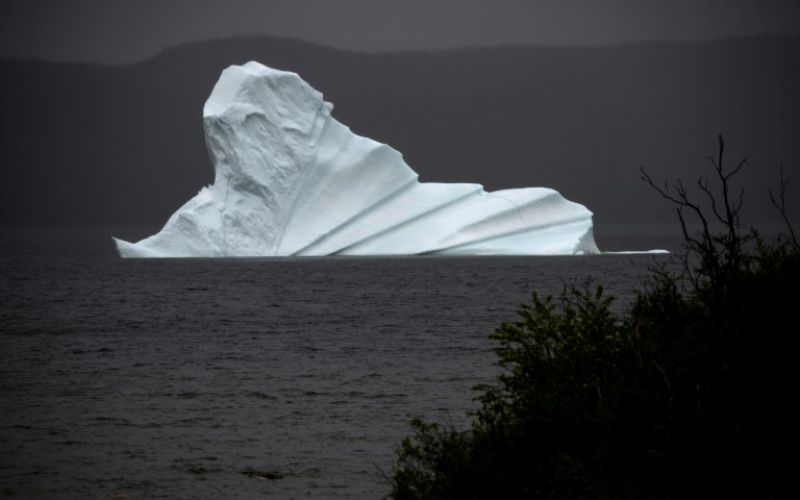 An iceberg floats near King's Point, which is located on Canada's newly christened 'Iceberg Corridor'. (Photo: AFP)
An iceberg floats near King's Point, which is located on Canada's newly christened 'Iceberg Corridor'. (Photo: AFP)
Last year, a total of 500,000 tourists visited Newfoundland and Labrador, a number roughly equivalent to the province's total population.
Those visitors spent nearly Can $570 million (US $433 million), government figures show.
- Melting ice -
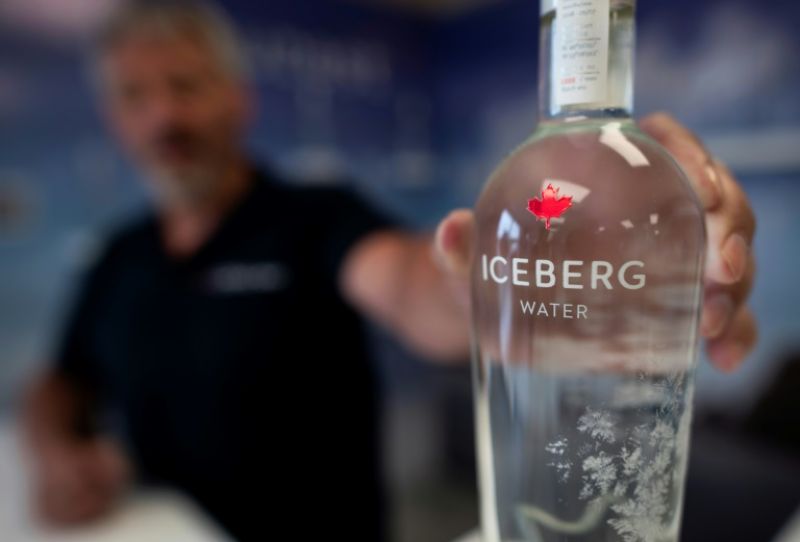 Kerry Chaulk manages a company that bottles iceberg water and sells it to tourists. (Photo: AFP)
Kerry Chaulk manages a company that bottles iceberg water and sells it to tourists. (Photo: AFP)
The tourism boom has helped offset the decline in the region's traditional fishing industry, which is in crisis because of overfishing at the end of the last century.
Some are even marketing "iceberg water" as the purest on Earth -- and selling it as a high-end luxury item. The melt is also used in vodka, beer and cosmetics.
But beneath the shiny surface of economic success is the dark truth that the area is in part profiting from accelerated global warming in the Arctic, and that the industry is precarious at best.
In the village of Twillingate, employees at the Auk Island Winery -- which makes its product from iceberg water and locally picked wild berries -- have already seen that business can be unpredictable.
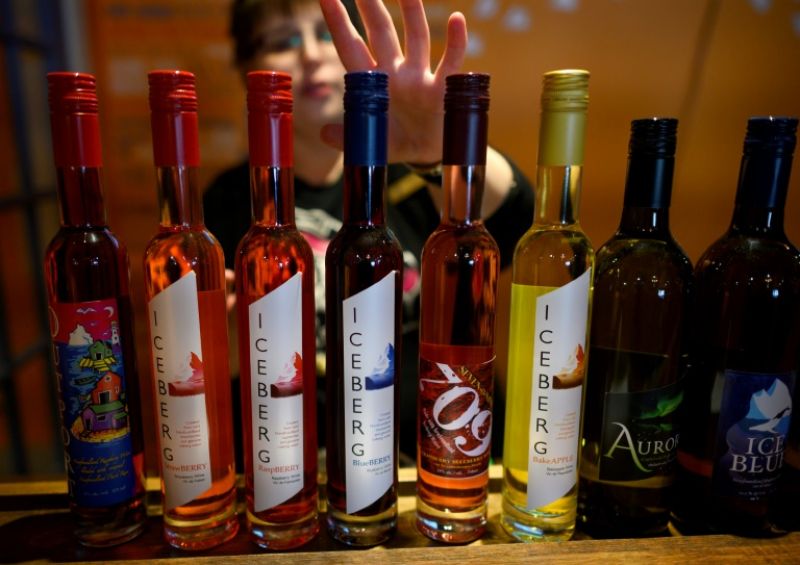 Auk Island Winery sells iceberg berry wines in the Newfoundland village of Twillingate. (Photo: AFP)
Auk Island Winery sells iceberg berry wines in the Newfoundland village of Twillingate. (Photo: AFP)
"We see the difference in the number of tourists from year to year, depending on the amount of icebergs in the area," says Elizabeth Gleason, who works at the winery.
"This year was a good year. Last year, we had almost none."
The Arctic is warming three times faster than the rest of the world. In mid-July, record temperatures were recorded near the North Pole.
In recent years, the icebergs have drifted further and further south, posing a threat to shipping on this busy route between Europe and North America.
For now, tourists are enjoying the view and the experience while they can.
"The prevalence of icebergs has good things and bad things about it," says Melissa Axtman, an American traveler.
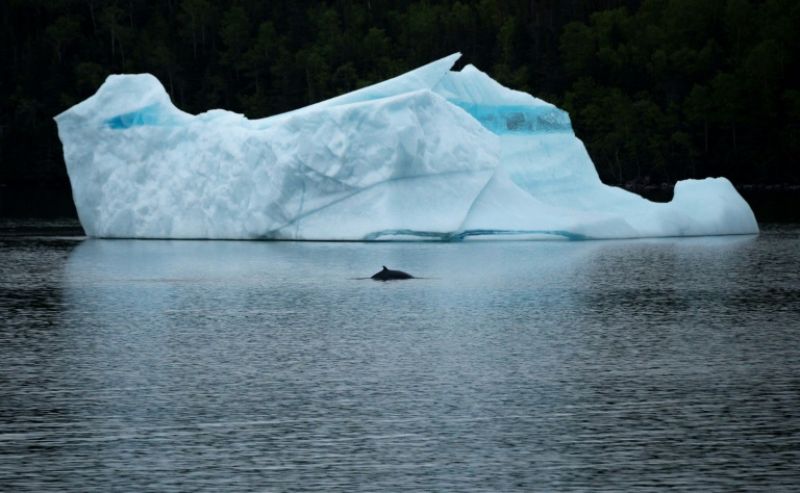 A whale swims in front of an iceberg at King's Point. (Photo: AFP)
A whale swims in front of an iceberg at King's Point. (Photo: AFP)
Laurent Lucazeau, a 34-year-old French tourist, says seeing an iceberg was sobering.
"It is a concrete image of global warming to see icebergs making it to these places where the water is warm," he told AFP.
"There's something mysterious and impressive about it, but knowing too that they are not supposed to be here makes you wonder, and it's a little scary."
Canada: At dusk, tourists marvel at the sensational collapse of an iceberg at the end of its long journey from Greenland to Canada's east coast, which now has a front row seat to the melting of the Arctic's ice.
While the rest of the world nervously eyes the impact of global warming, the calving of Greenland's glaciers -- the breaking off of ice chunks from its edge -- has breathed new life into the remote coastal villages of Newfoundland and Labrador.
Once a hub of cod fishing, the province now plays host to hordes of amateur photographers and tourists hoping to capture the epic ice melt for posterity. As winter ends, iceberg spotting begins.
"It keeps getting better every year," says Barry Strickland, a 58-year-old former fisherman who now takes tourists in his small boat around King's Point in the north of the province.
 Tour guide and former fisherman Barry Strickland steers his boat near an iceberg at King's Point -- iceberg tourism has been a success for the area on Canada's eastern shores. (Photo: AFP)
Tour guide and former fisherman Barry Strickland steers his boat near an iceberg at King's Point -- iceberg tourism has been a success for the area on Canada's eastern shores. (Photo: AFP)
"We've got 135, 140 tour buses with older people coming into the town every season so it's great for the economy."
For the past four years, Strickland has taken visitors to bear witness to the death throes of these ice giants, which can measure dozens of meters in height and weigh hundreds of thousands of tons.
Winds and ocean currents bring the icebergs from northwest Greenland, thousands of kilometers (miles) away, to Canada's shores.
In a matter of weeks, ice frozen for thousands of years can quickly melt into the ocean.
- 'Incredible' rise in tourism -
 Tourists look at icebergs from the seashore of King's Point -- May to July is peak viewing season, bringing thousands of visitors from around the world to this tiny village of just 600 residents. (Photo: AFP)
Tourists look at icebergs from the seashore of King's Point -- May to July is peak viewing season, bringing thousands of visitors from around the world to this tiny village of just 600 residents. (Photo: AFP)
Strickland's boat excursions are often fully booked during the high season from May to July, with tourists coming from all around the world to King's Point, a village of just 600 inhabitants.
The villagers keep track of the icebergs on an interactive satellite tracking map put online by the provincial government.
"There's not much in these small outport towns anymore to keep people around, so tourism is a big part of our economy," said Devon Chaulk, who works in a souvenir shop in Elliston, a small town of 300 on "Iceberg Corridor," as the coastline is now known.
"I've lived here my entire life, and the increase in tourism around here in the past 10 to 15 years has been incredible. It's not surprising to have thousands of people here over the next couple of months," said the 28-year-old.
 An iceberg floats near King's Point, which is located on Canada's newly christened 'Iceberg Corridor'. (Photo: AFP)
An iceberg floats near King's Point, which is located on Canada's newly christened 'Iceberg Corridor'. (Photo: AFP)
Last year, a total of 500,000 tourists visited Newfoundland and Labrador, a number roughly equivalent to the province's total population.
Those visitors spent nearly Can $570 million (US $433 million), government figures show.
- Melting ice -
 Kerry Chaulk manages a company that bottles iceberg water and sells it to tourists. (Photo: AFP)
Kerry Chaulk manages a company that bottles iceberg water and sells it to tourists. (Photo: AFP)
The tourism boom has helped offset the decline in the region's traditional fishing industry, which is in crisis because of overfishing at the end of the last century.
Some are even marketing "iceberg water" as the purest on Earth -- and selling it as a high-end luxury item. The melt is also used in vodka, beer and cosmetics.
But beneath the shiny surface of economic success is the dark truth that the area is in part profiting from accelerated global warming in the Arctic, and that the industry is precarious at best.
In the village of Twillingate, employees at the Auk Island Winery -- which makes its product from iceberg water and locally picked wild berries -- have already seen that business can be unpredictable.
 Auk Island Winery sells iceberg berry wines in the Newfoundland village of Twillingate. (Photo: AFP)
Auk Island Winery sells iceberg berry wines in the Newfoundland village of Twillingate. (Photo: AFP)
"We see the difference in the number of tourists from year to year, depending on the amount of icebergs in the area," says Elizabeth Gleason, who works at the winery.
"This year was a good year. Last year, we had almost none."
The Arctic is warming three times faster than the rest of the world. In mid-July, record temperatures were recorded near the North Pole.
In recent years, the icebergs have drifted further and further south, posing a threat to shipping on this busy route between Europe and North America.
For now, tourists are enjoying the view and the experience while they can.
"The prevalence of icebergs has good things and bad things about it," says Melissa Axtman, an American traveler.
 A whale swims in front of an iceberg at King's Point. (Photo: AFP)
A whale swims in front of an iceberg at King's Point. (Photo: AFP)
Laurent Lucazeau, a 34-year-old French tourist, says seeing an iceberg was sobering.
"It is a concrete image of global warming to see icebergs making it to these places where the water is warm," he told AFP.
"There's something mysterious and impressive about it, but knowing too that they are not supposed to be here makes you wonder, and it's a little scary."
